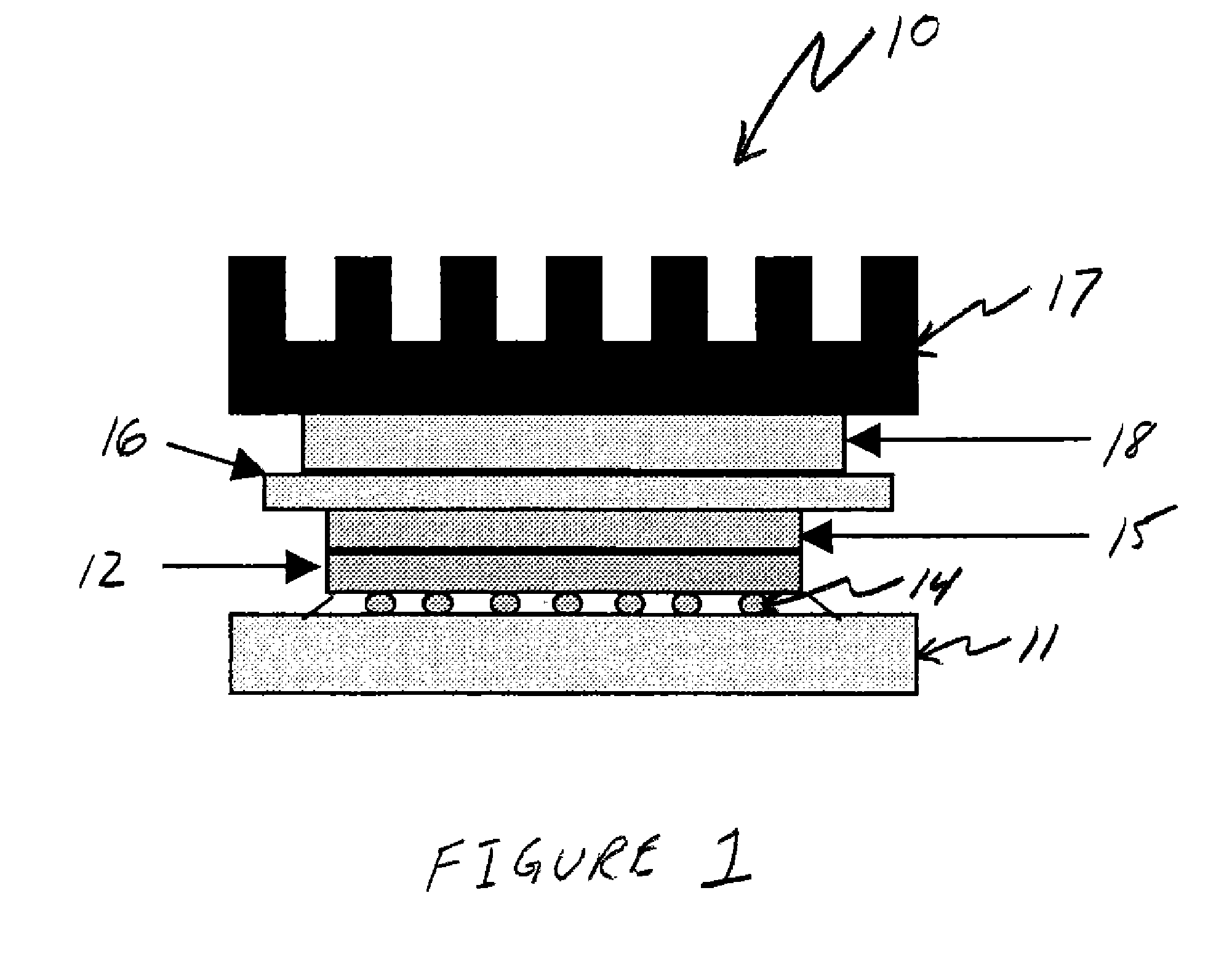Thermal Interface Material
a technology of thermal interface material and material, which is applied in the direction of solid-state devices, tyre parts, vehicle components, etc., can solve the problems of difficult handling of paste or grease materials, drawbacks of thermally conductive materials such as greases, pastes and pads, and electrical devices such as those containing semiconductors, which typically generate a significant amount of heat during operation
- Summary
- Abstract
- Description
- Claims
- Application Information
AI Technical Summary
Benefits of technology
Problems solved by technology
Method used
Image
Examples
example 1
[0019] A thermal interface material (Formulation A) was formulated as shown Table 1 (all percents are in weight percent). The acrylic polymer, solid epoxy, and acrylate rubber were dissolved in methyl ethyl ketone. Next, the ingredients were added stepwise into a mixing vessel. The mix vessel was placed under an air driven mixer and the materials were mixed for 20 minutes. Next, the materials were de-gassed and coated at 5 ft / min onto a silicone treated carrier substrate. Following the coating of the material, the film is dried at 75° C. for 20 minutes to remove solvent.
TABLE 1Thermal Interface Formulation AMaterialWeight PercentAcrylic Polymer112Acrylate212Liquid DGBEA310.4Solid Epoxy43.6Surface Agent51Surface Agent61Conductive Filler760
1SG80H-DR
2AR-14
3ARALDITE GY6010, commercially available from Vantico
4EPON 1001f, commercially available from Resolution
5FLUOROLINK F10, commercially available from Solvay Solexis
6FLUOROLINK S10, commercially available from Solvay Solexis
7bor...
PUM
| Property | Measurement | Unit |
|---|---|---|
| Temperature | aaaaa | aaaaa |
| Temperature | aaaaa | aaaaa |
| Percent by mass | aaaaa | aaaaa |
Abstract
Description
Claims
Application Information
 Login to View More
Login to View More - R&D
- Intellectual Property
- Life Sciences
- Materials
- Tech Scout
- Unparalleled Data Quality
- Higher Quality Content
- 60% Fewer Hallucinations
Browse by: Latest US Patents, China's latest patents, Technical Efficacy Thesaurus, Application Domain, Technology Topic, Popular Technical Reports.
© 2025 PatSnap. All rights reserved.Legal|Privacy policy|Modern Slavery Act Transparency Statement|Sitemap|About US| Contact US: help@patsnap.com

